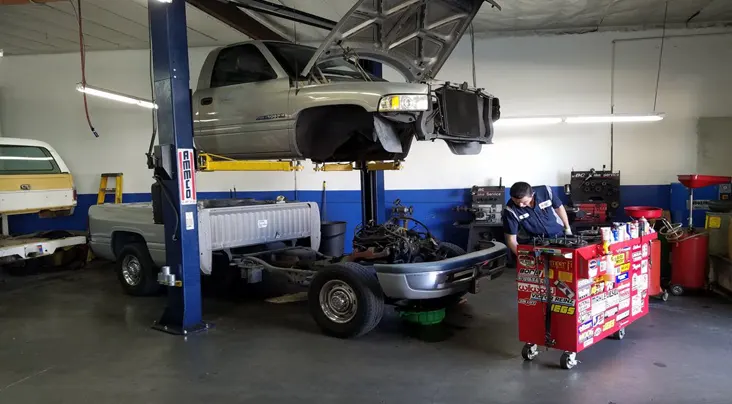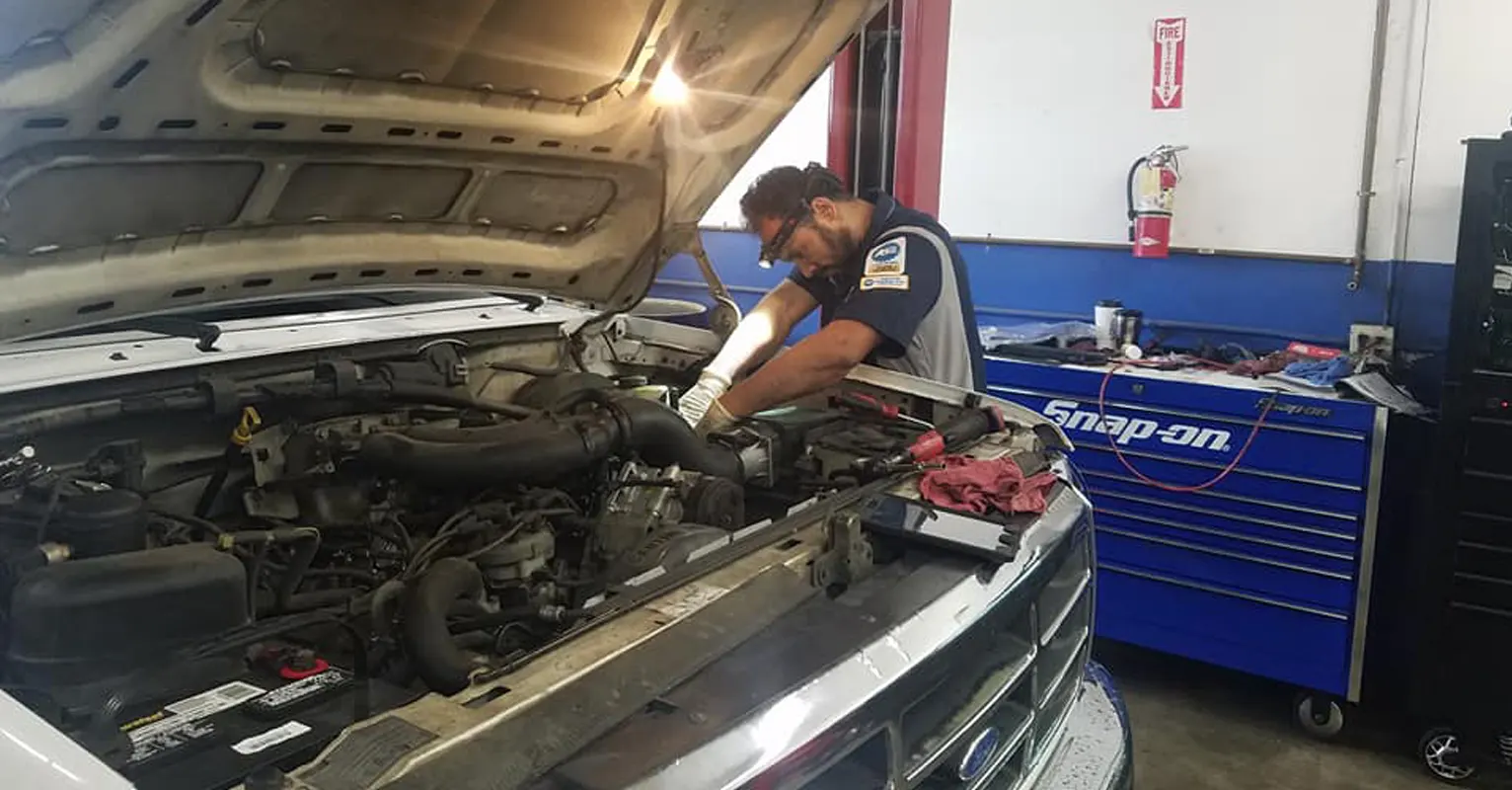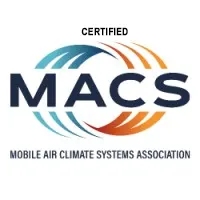
Archive for February 2025Slippery When Wet (Driving on Wet Leaves)Posted February 23, 2025 3:30 AMWhen the leaves fall, you might take a sightseeing trip to see them at peak color. Or you may simply live in a spot where there are a lot of trees. When those leaves get wet, you'd be surprised to learn just how slippery they can be. We all know ice is slippery to drive on. What causes tires to slip on ice is a thin layer of water that comes between the road and your tires. Wet leaves can have the same effect. The surfaces of leaves are super slick when they're dry, even worse when you add a little moisture. There's one other thing about leaves. They are smaller than each tire's footprint, so your tread grips the pavement with uneven traction. One study showed that your stopping distance can more than double on a surface covered with wet leaves when compared to that same road when it's dry. Double! That can spell trouble. So if you find yourself heading into an area with wet leaves on the road, slow down before you get into a jam. If you do start skidding, use the same driving techniques as you would on ice. Let off the accelerator, resist jamming on the brakes and steer into the skid. Again, speed can get you into trouble fast on a slippery surface. One thing that can help is having tires that are appropriate for the way you drive and the places you travel. Your service advisor can offer suggestions for tires that are right for you. Have a technician examine your tread depth and the condition of your tires' rubber. Sun can break down rubber over time, and age can cause tires to fail, even if their tread seems to be deep enough. Your tire is the point of traction between your vehicle and the road. Uncontrolled skids spell trouble and danger. Slow down when you see wet leaves on the road. They can make traction disappear before you know it.
"Current" Affairs (Blown Fuses)Posted February 16, 2025 3:29 AMYou may be driving along and find that suddenly your radio stops working. There are no numbers on the display. Then when you get home, you notice the garage door opener doesn't do a thing when you press the button. Hmm, this was working just fine this morning. Are the two problems somehow related?
No, your vehicle doesn't need an exorcism. This has all the signs of an electrical issue, and when you experience symptoms like those, you've probably blown a fuse. Most vehicles have fuses just like most houses have circuit breakers (some houses still have fuses). They cut the power when it reaches a pre-determined threshold that could cause major damage if it was allowed to continue. You might say fuses take one for the team. Most modern automotive fuses are plastic with a thin strip of metal in them designed to melt when a calibrated amount of power passes through. The philosophy is it's better for an inexpensive fuse to be destroyed than your sound system or your engine's main computer. It can be tricky to figure out what fuse has blown and why. Modern vehicles have many computerized electronic components; they can easily be damaged if too much electricity gets to the wrong spot. At Star Auto Service & AC in Brea, we have technicians trained to trace which fuse has blown and why. While sometimes a simple fuse replacement will fix the problem, other times there may be some other electrical component that has failed, causing the circuit overload. Our technicians have special equipment to track down where the power problems are, get to the root of the problem and fix it at the source. Keep in mind, fuses are there to protect your vehicle. And when they shut down your radio, garage door opener, vanity mirror or anything else, just be thankful they're doing their job. They may have saved you from a much more expensive repair. They've sent an important signal to you about your electrical system. That's why it's good to keep up with "current" affairs. Star Auto Service & AC TCB your PCV (PCV Valve Replacement)Posted February 9, 2025 3:27 AMYour gasoline engine goes through some exhausting work. Yes, it's truly exhausting, as in: it produces exhaust! And when your engine starts behaving like it's exhausted, such as running poorly or getting lousy fuel economy, the trouble may be something called a PCV valve. Did you know it's a series of explosions that creates the power in your engine? The spark plugs ignite a mixture of gasoline and air and BANG! A whole bunch of those and you're engine is humming away. Leftover vapors from those explosions go into your crankcase, which is also a place where engine oil goes. Those vapors still have a lot of unburned fuel in them, and if they had nowhere to go, they'd turn your oil into a thick mess called sludge, not good for a smooth running engine. Engineers came up with an idea. Re-direct those gasses building up in the crankcase into the engine's air intake and mix them with fresh air. That way the unburned fuel could go through the engine again and produce power. It also means the unburned fuel doesn't pollute the air. The part that makes that happen is called the Positive Crankcase Ventilation (PCV) valve. Besides reducing pollution and preventing the oil from turning to sludge, the PCV valve also relieves pressure in the crankcase, reducing the potential for oil to leak. One of the reasons you should get your oil changed as frequently as your vehicle's manufacturer recommends is that it helps reduce chances for problems with the PCV valve. After a while, the PCV valve can itself get gummed up and stick, and the driver may notice oil leaks, reduced power or engine hesitation. That's why it's important to make sure the PCV valve is operating like it should, and often it can be diagnosed during a visual inspection by our technicians. Replacing a PCV valve is usually quick and inexpensive. After it's done, your vehicle will run with the performance and fuel economy you're used to. Goodbye exhaustion! Star Auto Service & AC Heat and your Tires (Tire Pressure Monitoring System)Posted February 2, 2025 3:28 AMWith hotter weather and brutal heat waves becoming more common, the pressure in your vehicle's tires goes up. After all, heat causes air to expand, and the air in your tires follows the laws of physics. Overinflated tires can reduce your vehicle's traction, cause a hard, punishing ride and make your tires wear out faster; all are important safety issues. Four out of every ten drivers rarely check tire pressure. Some rely on their vehicle's tire pressure monitoring system (TPMS) to keep an eye on proper tire inflation. But it's not designed to do that. TPMS is a safety feature that has been required on vehicles made in 2008 or later, using sensors in the wheels that alert you to tire pressure problems. That warning can be a light on your dash, a digital message or a readout of the pressure in each individual wheel. But a study showed that more than 40 percent of drivers don't even know what the tire pressure monitoring light symbol looks like! One looks like a horseshoe with an exclamation point in the middle. The other looks like an overhead view of your vehicle with the tires at all four corners. They may even show the inflation number (usually in pounds per square inch, or PSI). The TPMS is designed to alert you that your tires aren't inflated within certain parameters, but the system shouldn't be a substitute for frequently having your tires checked with a tire gauge. A TPMS light is only required to come on when a tire is 25 percent under the recommended tire pressure; by that time, you're driving on an unsafe tire and causing excessive wear. Have your vehicle checked regularly by our professionals, and that includes tire pressure checks. If you do see the tire pressure warning come on, have our service center look at it soon. You may have a tire with a problem or the TPMS system may not be working right. Either way, since your tires are the only contact your vehicle has with the road, your safety depends a great deal on your tires being in top shape and correctly inflated. Keep your tires properly inflated and your TPMS working to alert you of any problems. And that's not just a lot of hot air. Star Auto Service & AC | ||
SearchArchiveNovember 2024 (16)December 2024 (5) January 2025 (4) February 2025 (4) March 2025 (5) | CategoriesTPMS (2)Inspection (2)Windshield Wipers (1)Alignment (2)Air Conditioning (2)Safe Driving (1)Service Intervals (1)Exhaust (2)Fluids (2)Drive Train (1)Transmission (2)Cooling System (1)Headlamps (2)Keys to a long lasting vehicle (1)Tires (2)Fuel Economy (1)Maintenance (1)What Customers Should Know (6)PCV Valve (1)Water Pump (1) | |
What Our Customers Say
Car & Truck Care, near Brea, CA
Star Auto Service is hands down the best and I've had a very pleasant and rewarding experience every time i use their services. They are always up front about what's needed, the pricing, and how long it should take and will never try to upsell you for things you don't need. Rob and his team are honest and incredibly knowledgeable so if your car needs anything don't even hesitate to take it to Star, they'll take care of you like you're family.
Read more >~ infamousferrell, 10/11/2024


Star Auto Service & AC
221 Viking AveBrea, CA 92821
Serving Areas
Star Auto Service & AC
221 Viking AveBrea, CA 92821



















